Airtightness Sans Sprayfoam
In North Texas the standard method for achieving good airtightness almost always involves spray foam.
I have only noticed ONE local builder attempt Airtight Drywall Approach(ADA).
As I look at the ADA details it seems complex and looks like a lot of “Gooey Stuff” and head scratching is involved.
I am considering using compression gaskets in more limited/strategic locations.
Here is a link to a “Gasket Concept” illustration.
http://dl.dropbox.com/u/16030874/gasket%20concept.pdf
This idea is only half-baked
GBA Detail Library
A collection of one thousand construction details organized by climate and house part



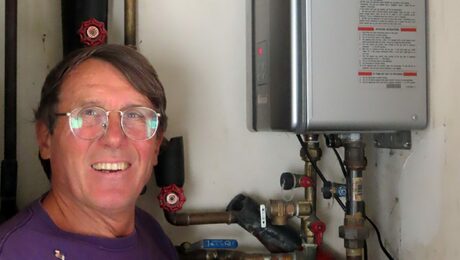

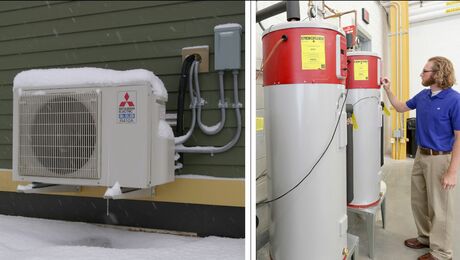
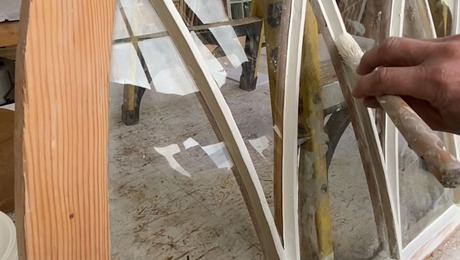
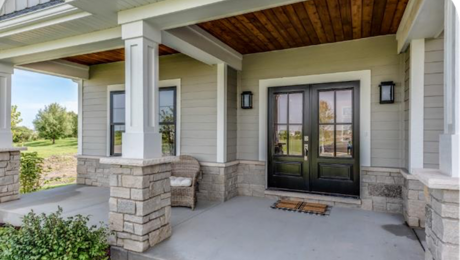
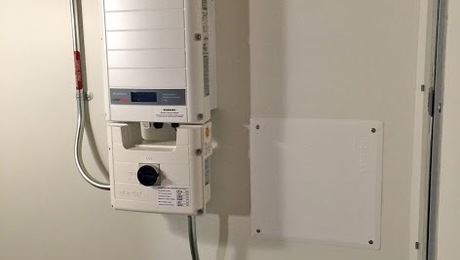
Replies
John,
For many years, proponents of the Airtight Drywall Approach have been promoting the advantages of gaskets over caulks. Gaskets are much less messy.
In case you missed it, here's a link to my recent article on the ADA:
http://www.finehomebuilding.com/how-to/departments/energy-smart-details/airtight-drywall.aspx?ac=fp
John, in your drawing is the air barrier transitioning from the drywall to the top plate to the exterior sheathing?
Switching from ADA at the ceiling to air-tight sheathing at the walls might simplify the air barrier by reducing the number of transitions while eliminating the need to seal around wall mounted electrical boxes...
Interesting...
Its an interesting question and I myself am just about to spec this new product from Owens Corning called Energy Complete. It is a spray on air barrier- not a foam insulation. It sprays on at the completion of framing and finishes up as a 1/8th to 1/4" thick permanently soft and flexible seal adhered to almost any building material. It easily fills in teeny nooks and crannies. You simply spray it along any crack, transition, joint...drywall edge before drywall goes up etc. It stays flexible and 'squishy' and somewhat sticky so when you put drywall up it creates a tight seal. It looks like a great answer. (and No I have no connection with OC!)
Yes, Lucas
I have not had a chance to look at Martin's article yet... I will soon.
What I am proposing is a little different from other gasket details I have seen.
I am trying to make an airtight lid and then connect it to the sheathing thru the top plate as you say.
I would also include airtight drywall in the exterior wall.
I will comment more after looking at Martin's Article.
Lucas,
Are you able to "zoom in" tight on the PDF
The high resolution was not working for Robert on another PDF that I had sent to him.
I am trying to show cracks and gaps between components.
John,
Have you ever hung any drywall? For your detail to work, the ceiling DW pieces would have to be cut tight to each wall/partition to compress the gasket (would more likely just lift the gasket), and no drywall hanger cuts ceiling pieces so tight that a slight out of square or deviations in the wall plates will prevent it from being easily lifted into place. They are typically cut at least a ¼" shy of dimension, and then the wall DW is butted to the ceiling.
If you're using air-tight drywall on the exterior walls, then no gasket is needed at the top plate, since the taped joint creates air barrier continuity.
ADA gaskets are meant to be applied to the face of the wall plates and door and window rough openings before hanging the DW on the wall, but continuity across intersecting partitions (and from downstairs wall to upstairs wall) still requires either gaskets or goo between framing members.
I've used both gaskets and goo, and still prefer the goo. The EPDM wall plate gaskets (for under the plates) tear too easily when erecting a wall, and the drywall gaskets create a slight bulge which prevents trim from installing flat. In fact, even the plate gaskets raise a wall enough to require shimming at a center bearing wall that didn't get gasketted. The only advantage I've found to the gaskets would be if framing during icy weather when goo might not stick to to frozen lumber.
John, I was able to zoom in. I could even see a nicely crushed gasket between the top plate and sheathing.
Robert, I am no expert on hanging drywall. If you inspect my work you will find the seams easily...
Bear with me here...
The ceiling drywall could be installed so that the entire gasketed perimeter of the house was done first using sheets with un-cut edges. Once all the gasket-to-DW connections are made, the rest of the ceiling could be "filled in" with sheets cut as per usual.
What do you think?
One thing about ADA that has never been clear to me...
From plan view, does the air barrier include all the partition wall DW as well or does it somehow exclude the partition walls on the plane of the exterior wall?
I'm imagining partition walls jutting out like complex little peninsulas from the exterior wall, making it very challenging to achieve continuity.
Lucas,
Seems like you don't hang much DW either. Just like plywood on a roof, the seams should be staggered, and the panels hung in a row starting from one edge and then built out from there, finishing the other edge with pieces cut to fit. Factory edges must meet in the field and cut edges get buried at the perimeters.
Lucas,
The continuity happens at the framing. All interruptions in the plane of the outer walls and upper ceiling must be gasketed or gooed as the frame is assembled. The drywall is only the final "membrane" to connect the already sealed framing.
A 1x6 partition take-off, for example, allows the intersecting 2x4 partition a "gasket" to span to the drywall on either side. Upstairs partitions that are parallel to ceiling joists, for instance, should have a 1x6 above the top plate to span from drywall to drywall.
This is similar to the way some of us used to do poly VBs, with narrow poly "gasket" strips at partition take-offs and over upstairs partitions to create continuity. I find it easier to use Tremco, in spite of its gooiness, as the framing progresses and it takes no more fussing than any other method of insuring air tightness.
The biggest problem with the goo approach is getting drywallers to deal with it, and that's why I prefer to hang all the DW myself (or with my own crew). For those who hire drywall contractors, the gasket approach would be much more congenial, but you'd still have to keep an eye on them to make sure they don't undermine the system.
One of the better pictorial explanations of ADA is at BSC (Dr. Joe invented it) http://www.buildingscience.com/documents/information-sheets/4-air-barriers/air-barriers-airtight-drywall-approach/
John's ceiling gaskets would work if the ceiling DW was installed first, then the bulb gaskets below that on the top plates of partitions and exterior walls, and then the wall DW installed over the gaskets. The taped joint between wall and ceiling completes the diaphragm.
I really want to like ADA.
The location of DW in a building envelope is a good place for an air barrier.
The material properties of DW are perfect for an air barrier.
Most new houses will have DW anyway.
The BSC link (thanks for that by the way) reminds me of why ADA makes me uneasy.
Lots of "gooey stuff".
Lots of gaskets.
Lots of details at intersecting walls/ceilings/floors/rim joists.
Lots of penetrations to be detailed.
Not enough experienced and enthusiastic ADA installers.
What's nice about ADA is that there are no "ADA installers" - it doesn't require yet another subcontract specialty, it's not another type of membrane or material that's added to the building envelope, and requires no tools that are not already on the job.
It simply uses those tradespeople already on site to do what they would be doing anyway, but with one additional simple step that requires a very short learning curve and a bit of additional oversight.
It's funny that builders who use gooey stuff all the time, including foundation damproofing, asphalt roof sealers, construction adhesives, various caulks, gun foam, carpenter's glue - for some reason balk at just one more type of goo.
I suspect that most of those who object to ADA simply haven't tried it. I just trained an experienced builder in using the Tremco ADA technique, and he picked up on it very quickly with just a few pointers from me. He seems to take pride in making the frame and the DW so well sealed, and has enjoyed figuring out the details as he went.
I realize that continuous exterior foam or exterior sheathing seems simpler (like SIPS did until builders realized all the hot knifing and joint sealing that's required). But there's a lot of detailing for those systems as well and, in some cases (such as Zip Wall), another new set of expensive materials and proprietary techniques.
How about this detail with no gaskets?
http://dl.dropbox.com/u/16030874/Sans%20Gasket.pdf
Mastic-like stuff, mystery material, air-stop tape, thermal break gaskets...
I can't see how this is any simpler than ADA, which requires only one type of "stuff".
John,
How did you post the image? I haven't figured out how to do it yet.
OK, I got it. The "File Attachments" option under the "Post New Answer" box.
Martin,
do you see the words.............. File Attachments ?
then browse from your computer
Edit to say...
It looks like the thread is bumped after we edit
Robert,
when you say ADA....
Do you mean like this......
John,
That looks a bit excessive. But it depends on how many separate materials comprise the air barrier assembly, since each air barrier material must be joined to each contiguous material in order to complete an assembly and, ultimately, an air barrier system (6 sides of the cube).
But what that picture doesn't show is the prior and essential step of joining framing members that span across drywall membrane discontinuities, such as sill to band joist, band joist to subfloor, subfloor to bottom plate, and elements of a built-up partition take-off.
ADA requires thinking through the entire construction process to make sure that the interior air barrier can be traced on the plans without lifting the pencil. The only way to depict it is in cross-section.
John, in your second detail (with the mystery stuff), is that a 2x2 service cavity that I see?
Lucas,
It is not exactly a service cavity like the Euros do...
The 2x2 is for cross-hatch strapping.
The "mystery stuff" above the top plate is still to be determined.
My first thought was something like Dense Glass Gold...
because it seems to work well with Liquid applied membrane....fire resistant.....
and I am not sure but I am thinking it would be compatible with tape & joint compound and or Airstop Tape
There may be compressive structural issues though.
Another possibilty is lumber that has been planed to match the thickness of the drywall.
The "mystery stuff" used as a baffle could be something like Dense Glass Gold
I like the idea of getting away from using foam. And I like the idea of ADA and sealing the house at the top and bottom plates.
The way we’ve been doing that is through a “header wrap” detail where we run inexpensive, 9” wide black non-adhesive six mil poly “window wrap” between the sill seal and the bottom plate wrapping up the exterior of the sheathing and taped to the house wrap and also between the top plate and upper top plate wrapping down over the sheathing and taped to the house wrap. This seals the joint between the sheathing and the exterior of the top plate and terminates the top and bottom of our house wrap.
We also have been using 1” strips of sill seal gasket on the lower top plate, not up against the ceiling. We make these gaskets out of sill seal material by driving utility knife blades about an inch apart into the end of a 2x6 at an angle and pulling the sill seal material down the 2x6 and through the slicer into a trash can. The resulting ribbons are easy to staple to the top plates and very economical compared with other options and sill seal doesn’t need to be special ordered so it’s not a crises if you come up a little bit short.
We have placed the gaskets before drywall but we often have to do a lot of repair after the ceiling is hung. It’s generally better to let the hangers do the ceilings and then jump in and run the gaskets before they do the walls. Our hangers have been receptive to this as they don’t like trying to protect the gaskets when hanging the ceilings. When we do airtight drywall we also seal the interior top plates. We have a lot of trouble in our area getting our hangers not to fasten the ceiling drywall too close to the interior truss-to-wall connections with resulting winter truss uplift cracking so having a laborer on site for the header wrap also gives us an opportunity to alert the hangers to places where they are fastening too close to roof trusses.
Michael,
there is something disturbing about your bottom plate detail.
It looks like it would not drain?
John,
the poly is wrapped under the house wrap and connects it to the sill seal, the termite flashing we use gets bent down at a 45 degree angle during the siding installation and the siding is installed to below the top of the foundation. If we are using stucco our tar paper layers and weep screed are installed an inch or so below the top of the foundation as well. The poly protects the bottom of the sheathing from moisture rather than trapping moisture there.
Note that 6" flashing is used as termite shield when done on a slab so the framers can see the chalk line as they tilt and line the wall but on a crawlspace the termite flashing is 10 or 12" so as to stop crawly things on both sides of the wall. When we are doing crawls on concrete block we hang 6 mil clear poly on the inside of the block and lap it out onto the floor a foot or two so when we come back later to tarp the floor and insulate the inside of the block we don't have any issues with the air and moisture seal from the interior air barrier in the sealed crawl to the exterior air barrier, the house wrap, to the ceiling drywall layer.
I like your work Michael Chandler
I agree with John that wrapping the bottom edge of the sheathing in plastic is as likely to trap moisture as to keep it out (plastic works the same in both directions).
If you did the same using housewrap gaskets rather than poly, you'd have a durable detail.
Can tape really be considered a durable, long-lived component of an air barrier system?
In my un-heated workshop I have; Duct-tape (or duck-tape - whatever), foil mastic tape, tuck-tape, electrical tape and masking tape.
None of my tapes stick as well as they should at -8C (this afternoon's high). I know that at -20C none of them really stick at all. At -30C some tapes start getting a bit brittle.
Does heat or humidity have any effects like this?
Lucas,
I think you answered your own question. At least the laps in Chandler's detail are shingled and not simply taped. But the shingling is for drainage and the tape is necessary for air barrier integrity, so the question is a valid one.
But what I don't understand is why you were "unverified" on the New Features thread and are a moderately useless member of the community on this thread (-1 rating). Something strange is going on here. Did you walk through the X-ray scanner?
I used to use strips of Tyvek for this detail but when I asked the guys to cut 9" x 9'0" strips they ended up ragged and more like 18" and then they came up with the idea of chopping 9" cylinders off the ends of brand new rolls of 180 x 9' tyvek leaving me with 6'0"x 180'0" drops and I just went with the cheap black poly.
I figure that here in North Carolina with 37" roof overhangs and decent siding we're probably not seeing much moisture in there anyway. Under the sills it actually protects the galvanized termite flashing from the acidity of the treated mudsill.
It might be better with housewrap and I suppose I could have chopped those drops up and carried them to the next framing job and you are free to spec it that way on your houses but the do-ability and economy of just adding three or four rolls of the black poly window wrap to the framing order has been a winner on my jobsites.
In this case I think do-ability trumps perfection.
I'll post my answer in the "New Features" thread.
It seems to me that tape is becoming relied upon more and more to tie together one component of an air barrier to another.
I wonder how wise this is...
Dr Joe says "physics trumps chemistry"
I like "it doesn't matter what the R-value is if the doors open"
I also like "I'd rather go fishing and not get paid than go to work and not get paid"
I am trying to better understand Airtight Drywall Approach(ADA)
Concerning Martin's article about ADA.
http://www.finehomebuilding.com/how-to/departments/energy-smart-details/airtight-drywall.aspx?ac=fp
I have tried to render the floor joist area from the article.
This section is cut thru the joist BAY and....
From this perspective...
It looks Simple enough and as though "air control" is achieved.
http://dl.dropbox.com/u/16030874/fhb%20ada.pdf
This section is cut THRU the JOIST and....
It appears to me that the rim-joist is Not-So-Airtight.
http://dl.dropbox.com/u/16030874/fhb%20ada%20thru%20joist.pdf
Unless Additional Gooey Stuff is added around both sides and under of every Joist?
Should it really look more like this?
http://dl.dropbox.com/u/16030874/more%20gooey%20stuff.pdf
John, if the rim joist has some "gooey" applied to the bottom edge as it's installed on that top plate, then it would be continuously sealed.
Thanks Lucas,
I was focusing on the illustration and not the text of the article.
John,
Check out the BSC cross-section for ADA (below).
There is no need to goo each joist, since they are not part of the vertical air-barrier "membrane".
Each exterior framing assembly, as they are being stacked vertically, must be sealed to the one beneath it:
- sill to foundation
- band joist to sill
- subfloor to bandjoist
- bottom plate to subfloor
- top plate to next bandjoist (with drywall connecting the bottom plate to the top plate)
Robert,
do you have the link to the illustration?
Robert, could a polyethelene gasket be used instead of "gooey stuff" between that rim joist and the plate underneath it?
John,
http://www.buildingscience.com/documents/information-sheets/4-air-barriers/air-barriers-airtight-drywall-approach/files/bscinfo_401_airtight_drywall_approach.pdf
http://www.buildingscience.com/documents/information-sheets/4-air-barriers/air-barriers-airtight-drywall-approach/
Lucas,
Yes, any air-resistant membrane can be wrapped completely around the rim joist so that it laps over the inside face of the top plate beneath it and the bottom plate above it - and then caulked to the drywall.
But the whole reason for ADA is to eliminate poly from the building envelope and to avoid the moisture-trapping problems that it can entail.
It's also much more of a PITA to wrap poly gaskets while assembling the frame than to simply squirt a line of goo as you go.
[I should market a bumper sticker: Goo As You Go]
Sorry, I knew I should have included a pic. By poly gasket I meant this:
http://www.homedepot.ca/webapp/wcs/stores/servlet/CatalogSearchResultView?D=905956&Ntt=905956&catalogId=10051&langId=-15&storeId=10051&Dx=mode+matchallpartial&Ntx=mode+matchall&recN=112022&N=0&Ntk=P_PartNumber
I thought stapling this down to the top plate before assembling the joists would be easier than "gooing as I go".
Though you are right in that I should get away from adding polyethylene to the list when it isn't required.
John, sorry to hi-jack your thread with my questions. What can I say, air barriers are interesting...
I think the BSC Ilustration (like FHB) is confusing also because it looks like the goo is applied after framing... and not As Lucas suggested
Robert .. Goo as you go makes sense
Is it just me?
When they say continuous fillet .... That would have to be after framing ... Not as you are framing
If it is a fillet... how can it be continuous?
John,
There is some ambiguity in those illustrations. Since most builders won't bother with ADA because it requires a level of forethought, planning, coordination and oversight that is a PITA for those who simply want to get the damned project done and have to deal with recalcitrant subs, a compromise method was propagated called Simple Caulk n Seal (SCS), as mentioned here: http://www.energysavers.gov/your_home/insulation_airsealing/index.cfm/mytopic=11310
But, as we all know, caulking a joint after it's assembled is not the same as sealing it during assembly, and will not be as reliable or durable. So GOO AS YOU GO is my motto.
And aren't forethought, planning, coordination and oversight essential elements of any well conceived and well implemented building project?
Lucas & All who want to talk about Air Control...
Be my Guest... all climates are welcome here
Here is my question For North Texas...
Mixed/Hot Humid Climate...
Where is best place for the Air Control Layer?
A. Drywall
B. Exterior Sheathing
C. Drywall and Ext.Sheathing
And Why?
John,
I think there is a case to be made for "it doesn't matter so long as there is an air barrier" but personally I cast my vote for warm-side.
I think there is more potential for simplicity of design in a warm-side ACL.
I'm a simple fella ;-)
First, I'd like to get rid of Dr. Joe's ACL terminology - both because that abbreviation is already taken and because it seems to suggest a single layer, like a membrane. I prefer the language of the Air Barrier Association of America (ABAA), which differentiates between air barrier:
materials 0.02 l/sec-m² @75 Pa (0.004 cfm/sf @ 1.57 psf) – 25 mph equivalent
assemblies 0.20 l/sec-m² @75 Pa (0.04 cfm/sf @ 1.57 psf) – 25 mph equivalent
enclosures 2.00 l/sec-m² @75 Pa (0.4 cfm/sf @ 1.57 psf)– 25 mph equivalent
This is a much more complete picture of the complexity of creating a continuous air barrier in a building, with different standards for each level. And it allows the possibility that the air barrier may be exterior on one plane and interior on another, as long as they are connected.
Given that, I also think that an air barrier, much like a vapor barrier/retarder, is best placed on the warm, humid side because the goal is not simply to prevent air and moisture movement through the envelope but also to prevent movement into and within the envelope.
I want to get back to Robert's comment about "Goo as you Go"
because I still see a weakness in the ADA instructions and Ilustrations.
http://www.buildingscience.com/documents/information-sheets/4-air-barriers/air-barriers-airtight-drywall-approach/files/bscinfo_401_airtight_drywall_approach.pdf
If I were to give the subcontactors the above document......
I see a weakness (a path) in the areas hilighted in blue.
Robert,
Is there anything wrong with the term Air Control Layer(s)?
John, I may be entering the world of the heretic for saying so, but I think you are right that the BSC's drawings in this information sheet are... misleading.
Maybe you should make you own instructional drawings using the "Goo as you go" approach.
Why not "Goo as you go" behind this partion wall?
Why not "Goo as you go" under the bottom plate of that exterior wall - or go with the gasket?
This is one reason I like the term "ACL". Not because it suggests "membrane", but because it suggests continuity... something that can be traced without lifting your pencil off the paper.
John,
You wrote, "I see a weakness (a path) in the areas highlighted in blue."
I don't. Assuming these are first-floor joists -- and assuming the basement is part of the home's conditioned space -- where is the air barrier leakage path? Not at your blue-marked highlights.
Martin,
I think Lucas can "see" it
Martin, I think what John is trying to show is that these illustrations suggest that the "goo" in certain areas be applied after framing.
If this is the case, then you cannot continuously seal the bottom of that rim joist to it's plate where the joists are connected - unless you trace each entire joist connection with "goo".
John,
Are you worried about the crack between the rim joist and the mudsill -- specifically the 1 1/2-inch wide area directly under the joist that you have highlighted? Or are you worried about something else?
Martin,
Your article includes this instruction
translation "Goo as you Go"
I do not see the same instruction on the BSC page
maybe I just missed it?
John,
I just wanted to understand your point, and I think I get it now. And I'm glad that my article includes better instructions (apparently) than the BSC Web site.
However, I think you will agree that the 1 1/2-inch wide gap you have identified is small, and likely to be relatively unimportant, especially considering the fact that sheathing installation will help reduce leakage. Anyone following the BSC instructions would have a huge improvement in airtightness -- even if a tiny amount of air leaks in under the joist.
That said, I'll accept your point -- the way recommended in my article is better.
John, et al:
I thought I already explained the confusion. The original ADA is a goo-as-you-go approach, which was later modified into a caulk after installation approach for those who were too lazy to do it right and wanted an easier but minimally OK alternative. The BSC drawings and instructions seem to be a hybrid of the two. I think that makes it even harder and more problematic. (as noted, it requires some head scratching).
It's much easier to maintain continuity if you GOO AS YOU GO (or gasket as you go).
And I continue to think that ACL is misleading because an air barrier is neither a layer nor layers but an assembly of multiple materials and components that, properly combined, connected and integrated, form a continuous barrier to the movement of air.
We are fortunate to have the expertise and standard-setting of the Air Barrier Association of America, and even Dr. Joe uses their terminology (such as in his latest screed "Don't be Dense"), including air barrier material, air barrier assembly, and air barrier enclosure - each of which have different air leakage requirements.
If Dr. Joe has let go of his idiosyncratic term, it's best we all do.
John, when I answered "warm-side" I was being cold-centric.
Maybe the correct answer for mixed/humid is C.
What exterior sheathing can you use that will dry to the outside?
Robert's emphasis on "moisture buffering" within the wall assembly seems especially valuable in walls that dry in two directions.
On the Gulf Coast. Stop the moist air at its source ;-)
Even in cold country, I use a belt-and-suspenders approach. I believe the entire building envelope should be considered the air barrier assembly (a much better term, as it gets us out of single layer thinking).
I consider my air barrier to include the siding and trim, the doors and windows, the housewrap, the insulation and the drywall. With at least four "layers" to help stop air movement, there's a much better chance of success.
Lucas,
I am thinking Air Tightness at the Drywall AND the Sheathing
In North Texas it is almost standard procedure to fully sheath with OSB
I would suggest changing that to Plywood and perhaps Liquid Applied coating at the joints.
It should be possible to achieve Good Airtighness (between 1 and 2 ACH50)
If we would only make the EFFORT to apply an Enhanced Airtight Drywall Approach.
I think it could be done by trained friends, family and volunteers.
see photo of trained Habitat for Humanity volunteers installing siding in Dallas
Getting back to Robert's suggestion at comment #12
And also connecting the ceiling drywall to the exterior sheathing thru the top plate.
link to higher res PDF
http://dl.dropbox.com/u/16030874/pd.pdf
If you focus on air tightness with sheathing and insulation in the wall, sealing penetrations, etc, do you really need to worry about your drywall?
John, what are the "mystery materials"?
Looks like you could get better than "good" air-tightness with this system.
How would you detail partition intersections?
Allan,
The primary Intention of my detail is to "connect" the "ceiling drywall" to the "wall plywood".
With just a little more effort (and gaskets) a secondary air barrier could be created at the "wall drywall" too. (which should be ideal for a mixed climate)
Lucas,
the black stuff is mineral wool
the blue stuff is XPS
Robert's early comments suggested a partition "connection" using a 1x6 to tie the drywall together between rooms.
The reason for the XPS in the detail is because I hope to suggest some new details to the local Habitat for Humanity Chapter.
They are currently getting the DOW XPS for FREE
attached is a photo of the current H for H sprayfoam strategy.
Believe it or not....
The drywall goes on without any additional "gooey stuff"!!!
FREE is definately affordable.
I was just at the local HFH "re-store" looking for reclaimed rigid foam and copper pipe. This chapter doesn't get that kind of stuff.
I'm surprised they use sprayfoam - the installation seems a bit specialized for a volunteer organization.
Your detail seems a lot more "do-able" by volunteers - not to mention "tighter".
Especially if the drywall is "airtight" along with the sheathing.
John,
I think you are right that an "enhanced" ADA in the fashion of "goo-as-you-go" would make for a "good", simple and AFFORDABLE air barrier.
In the HFH context, the less obvious pieces (ie: 1x6 partition ties) that need to be gooed before installation could be marked with an red "X" so that the voulunteers would know that some "gooing" is required before fastening.
"Goo-as-you-go" reference material could be stapled to the plans.
John
I think it is pretty common these days to foam or caulk cracks and penetrations visible on the interior. This, coupled with creating a tight sheathing assembly and either cellulose or foam insulation in the walls, creates fairly air tight buildings. Or not? I guess my question is what are the tangible benefits of trying to create air tightness with drywall, given the cost and effort. Is it worth it?
Lucas,
The foam is by Demilec...
Not sure ..but I think they are paying retail price(no discount) for the foam
You would think that the foam contractor would provide or at least suggest taking care of the "GAPS"
Allan,
Are you asking me about the advantage of airtight drywall at the ceiling?
...or
the advantage of Airtight drywall at the exterior wall in addition to the airtight sheathing?
The advantage I see for airtight drywall at the ceiling...
It works with a (vented attic)... the lowest cost, highest performance Roof System
A System with a John Straube rating of 24
A Cathedralized Attic only scores from 11 to 15
The advantage of 2 air barriers at the wall would be more of a durability enhancement than energy performance....especially in a mixed climate
I guess what I’m asking John is for someone like myself who is regular building new homes, and recognizes the importance of air tightness, but also has limited money to spend on energy efficiency. I’ve never sealed drywall or used gaskets, I just want to know if I focus on air tightness with sheathing and wall insulation (in my case spray foam), is there a payback to seal the drywall? I have read Martin’s articles and links. There will be a labor and material cost component to do this, is it worth it?
Allan,
For your climate (Houston)
If you continue to use spray foam and caulk /seal the "other gaps" and use airtight sheathing on your exterior wall... I do not think you need to add airtight drywall.
What I am proposing/exploring here is an alternate method to achieve good airtightness and thus avoid the need for Expensive and Not-So-Green Sprayfoam.
Something with equal or better perfomance at equal or less cost.
The next step would be to add more insulation at a lower price than spray foam.